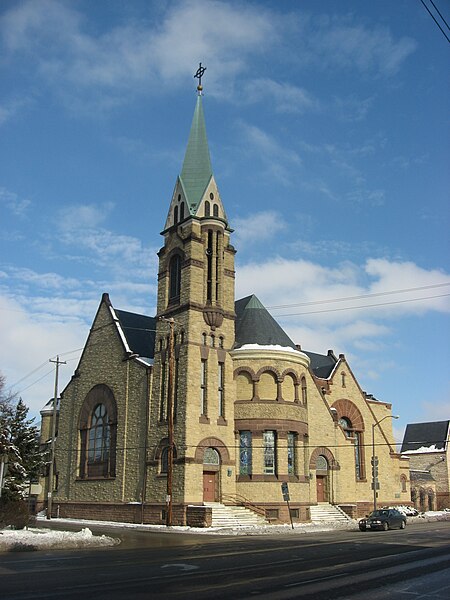East Broad Street Presbyterian Church
Broad Street (Columbus, Ohio)Churches completed in 1887Churches in Columbus, OhioChurches on the National Register of Historic Places in OhioColumbus, Ohio building and structure stubs ... and 7 more
Columbus metropolitan area, Ohio Registered Historic Place stubsKing-Lincoln BronzevilleNational Register of Historic Places in Columbus, OhioOhio church stubsPresbyterian Church (USA) churchesPresbyterian churches in OhioRomanesque Revival church buildings in Ohio

East Broad Street Presbyterian Church is a historic church at 760 E. Broad Street in the King-Lincoln Bronzeville neighborhood of Columbus, Ohio. It was built in 1887 and added to the National Register of Historic Places in 1987.The church was originally designed in the Richardsonian Romanesque style by architect Elah Terrell. In 1907-08 it was expanded to designs by Frank Packard.
Excerpt from the Wikipedia article East Broad Street Presbyterian Church (License: CC BY-SA 3.0, Authors, Images).East Broad Street Presbyterian Church
East Broad Street, Columbus Near East Side
Geographical coordinates (GPS) Address External links Nearby Places Show on map
Geographical coordinates (GPS)
| Latitude | Longitude |
|---|---|
| N 39.964853 ° | E -82.980288 ° |
Address
Broad Street Presbyterian Church
East Broad Street 760
43205 Columbus, Near East Side
Ohio, United States
Open on Google Maps










